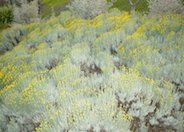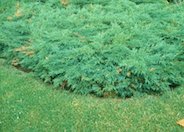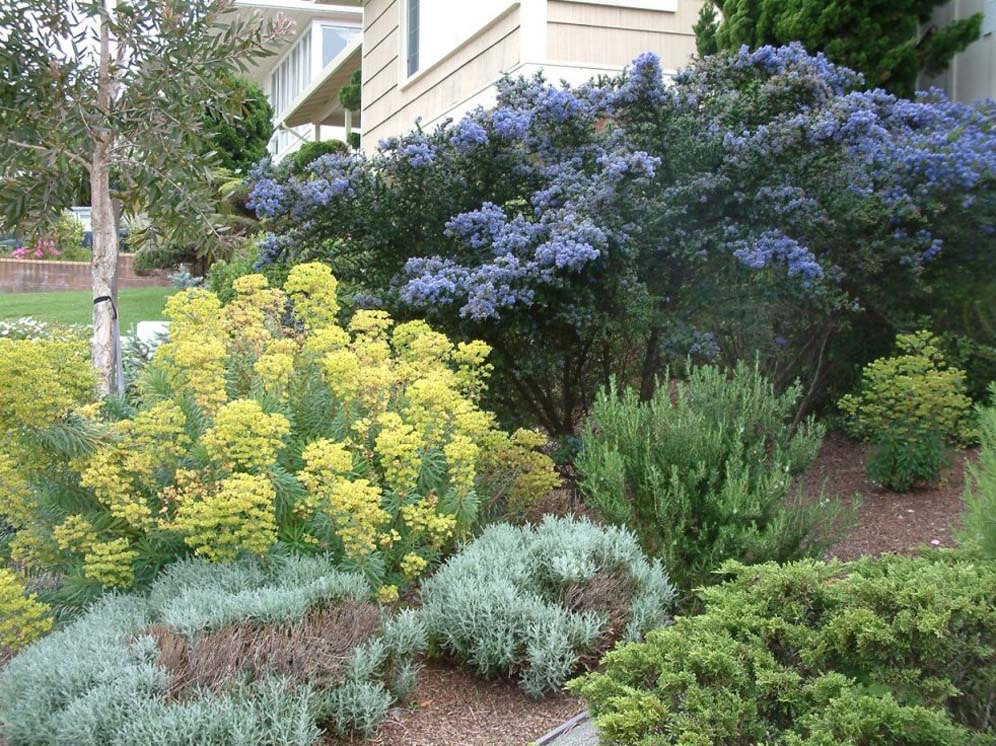
Common name:Concha California Lilac
Botanical name:Ceanothus 'Concha'
Concha is a lilac that grows 6'-8' in height and width. It has small narrow leaves with intense dark blue flower clusters in spring. It is tolerant of coastal and inland conditions. -Cornflower Farms

Common name:Gray Lavender Cotton
Botanical name:Santolina chamaecyparissus
This ground cover/small shrub will grow to 3' tall and has small, grayish silver leaves with yellow flowers that bloom in the summer.

Common name:Bush or Dome Euphorbia
Botanical name:Euphorbia characias
This perennial will reach about 4' tall and has blue green leaves with bright green flowers that bloom from late winter to early spring.

Common name:Scandia Juniper
Botanical name:Juniperus sabina 'Scandia'
Juniperus sabina 'Scandia' has dense, bright green foliage. It grows to 1' high and 6'-8' wide. This plant is a ground cover that can be used for erosion control. It can used for a cascading effect on walls. It is heat and cold tolerant and very reliable. It prefers full sun and is drought tolerant once it's established.

Common name:Cajeput or Paperbark or Punk Tree
Botanical name:Melaleuca quinquenervia
This evergreen tree will grow 20'-40' tall and 15'-25' wide. It has distinct brownish white spongy bark that peels off in sheets. It produces yellowish white flowers that bloom in spring and fall. It works well as a street tree or in lawns.

Common name:Hollywood Twisted Juniper
Botanical name:Juniperus chinensis 'Kaizuka'
The dark green foliage on the branches of this Juniper start in a narrow cone shape when young but open up gracefully when older. Its twisted looking branches resemble flames. It may grow 15' tall in 15 years. Over time, the branches may lean to one side. Junipers are highly combustible plants.
| Designer: | Blue and Yellow |
Photographer: GardenSoft |
Soils and Compost:
Maintain a two to four inch layer of mulch on the soil surface to reduce weeds, infiltrate rain water, and reduce compaction.
Water Saving Tip:
Adjust sprinklers to avoid watering sidewalks and driveways.
Integrated Pest Management:
Drip and other smart irrigation delivers water directly to roots, allowing no excess water for weeds.

